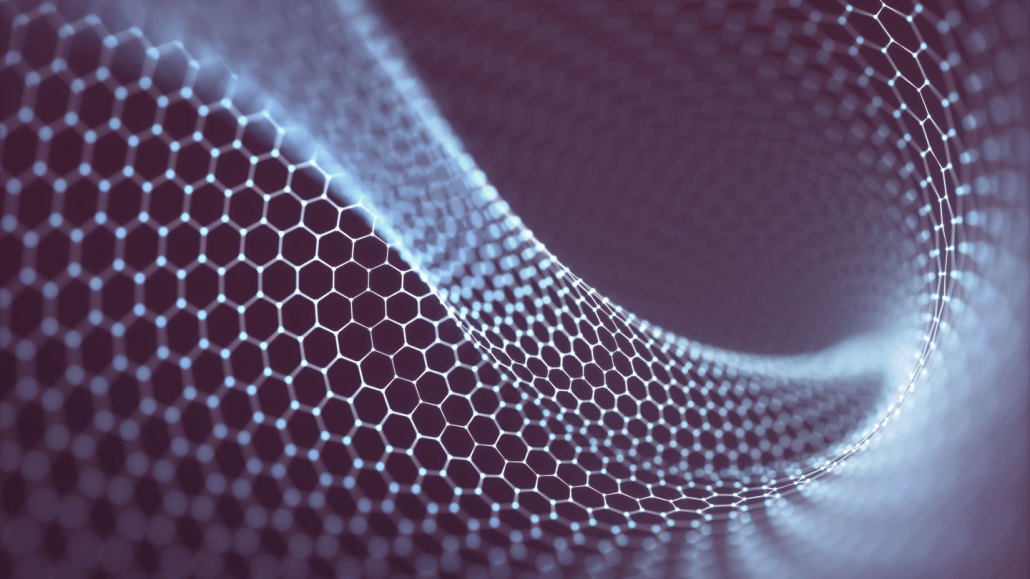Let’s learn about graphene
Lightweight, strong and electrically conductive, graphene has a long list of potential uses

Graphene is made up of a single layer of carbon atoms locked together in a honeycomb-like grid.
KTSDESIGN/Science Photo Library/Getty Images Plus
Share this:
- Share via email (Opens in new window) Email
- Click to share on Facebook (Opens in new window) Facebook
- Click to share on X (Opens in new window) X
- Click to share on Pinterest (Opens in new window) Pinterest
- Click to share on Reddit (Opens in new window) Reddit
- Share to Google Classroom (Opens in new window) Google Classroom
- Click to print (Opens in new window) Print
Graphene has a long list of superpowers. As a single layer of carbon atoms, it’s extremely lightweight and flexible. It’s also the strongest material on Earth. In fact, it’s about 200 times as strong as an equally thin sheet of steel. Electricity flows through graphene easily, and the material holds up even at high heat.
Such properties make graphene promising for a wide range of uses. It could help purify water or shield against mosquito bites. Or create faster, flexible electronics. Or increase the strength of plastic or cement. The list goes on and on. The huge potential of this material won its discoverers a Nobel Prize in 2010.
Unfortunately, graphene is still very difficult and costly to make in large amounts. That’s limited its widespread use. But scientists are trying to devise new, better ways to make this supermaterial. That includes ways to make it using waste carbon — which could help keep climate-warming carbon out of the atmosphere.
Want to know more? We’ve got some stories to get you started:
Converting trash to valuable graphene in a flash This so-called flash graphene can strengthen other materials — and fight climate change. (3/20/2020) Readability: 6.6
New ultrathin materials can pull climate-warming CO2 from the air Called MXenes, these nanomaterials show promise for slowing the rate of climate change. (12/15/2023) Readability: 7.6
New ‘tattoo’ could lead to drought-tolerant crops A sensor made from graphene measures how fast plants slurp up water from the soil. (2/16/2018) Readability: 7.6
Explore more
Explainer: In chemistry, what does it mean to be organic?
Graphene fabric keeps mosquitoes from biting
This bionic mushroom makes electricity
Could humans build a tall tower or giant rope to space?
Hard-to-burn ‘smart’ wallpaper even triggers alarms
How to build computer chips only 3 atoms thick
A graphene “tattoo” could help hearts keep their beat (from Science News)
Materials that made us (from Science News)
Activities
Did you know that the graphite in pencils is made up of millions of graphene layers stacked on top of each other? That means you can use pencils to make your own graphene at home! Check out this tutorial to find out how.






